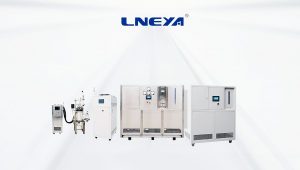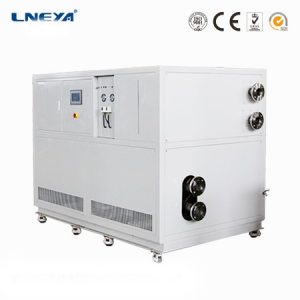Instructions for the use of temperature control equipment for isolation reactors
The reaction kettle is a commonly used reactor in pharmaceutical and chemical production. The temperature control equipment of the isolated reaction kettle is realized by controlling two doors, namely the heating water valve and the cooling water valve. make it even temperature. The temperature of the isolation reaction kettle is controlled in the heating stage, the heating water valve is opened, and the coil pipe in the kettle is connected with heating water, so that the temperature rises, and the rate of temperature rise is controlled by controlling the valve opening. After heating to the predetermined reaction temperature The heating was stopped, and cooling water was passed through the jacket during the reaction to remove the excess heat generated by the reaction, and the temperature was controlled to keep constant.

The choice of heat transfer medium for temperature control of isolation reactor is determined according to the process temperature requirements of each factory product. Common heat transfer mediums include superheated steam and heat transfer oil. Temperature measurement is usually composed of thermal resistance or thermocouple and its transmitter. The temperature of the heat-conducting medium flowing into the reactor is required to be kept constant. By adjusting the flow rate of the heat-conducting medium flowing into the jacket of the reactor, the temperature of the materials in the reactor can be controlled to meet the process requirements.
After the temperature control equipment of the isolation reactor is finished feeding, the reactor is heated with hot water. The raw material is fully mixed with the catalyst and absorbs the heat provided by the hot water. When the temperature reaches a certain value, the exothermic reaction begins. In this stage, it is necessary to raise the temperature or pressure in the kettle to the state where the reaction starts in a relatively short period of time, and it is necessary to keep the temperature rising continuously.
The temperature control of the isolated reactor is accompanied by a strong exothermic effect, and there is a positive feedback self-excited relationship between the exothermic rate of the reaction and the reaction temperature. This stage is the difficult point of control, which directly affects the quality of the product.
LNEYA’s isolated reaction kettle temperature control equipment – cooling and heating thermostat, compared with dynamic temperature control technology to control the temperature of the heat transfer medium, it also controls the temperature of the material within the specified range, which improves the work efficiency. The pipeline circulation system improves the power density ratio, reduces the usage of heat transfer medium, and saves energy.
Related recommendations
-
What are the advantages and disadvantages of thermal oil heating circulators?
1208The heat conduction oil heating circulator adopts a fully closed loop structure to directly act on the heat energy to the heated medium.Its advantages are: (1) Due to the continuous renewal of the heat transfer surface, the heat loss is small; (2...
View details -
Selection Method of Water Cooled Chiller or Air Cooled Chiller
996Nowadays, the application of industrial water chiller has involved various industries, including petrochemical industry, plastic industry, electronic industry, vacuum coating and so on. However, when purchasing industrial water chillers, many ente...
View details -
Application area of high temperature refrigeration and cooling control system
866The high-temperature refrigeration and cooling control system is used for supporting glass reactors, rotary evaporators, fermentation tanks, and calorimeters; widely used in petroleum, chemical, metallurgical, biochemical, physics, testing and che...
View details -
Fully closed cycle high viscosity fluid refrigeration heating flow control system
925Application:1. The tested object is connected to a test platform adapter.2. The internal parts of the parts are cooled, heated, flow controlled, and pressure controlled by various lubricating oils, hydraulic oils, aviation fuel, fuel oil, and co...
View details
 LNEYA Industrial Chillers Manufacturer Supplier
LNEYA Industrial Chillers Manufacturer Supplier














